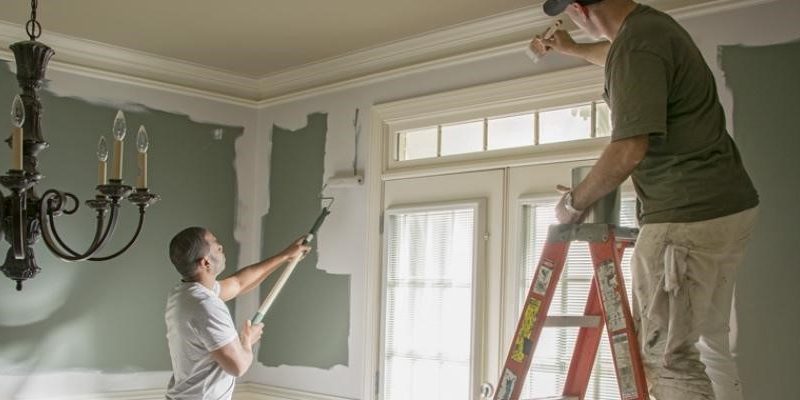With the state of California’s housing market being dire, more and more people are looking into building accessory dwelling units (ADUs) on their own property. After all, a secondary dwelling unit can provide a parent or adult child with a place to live and/or a source of income when they really need it. But what if your HOA finds out? When building an ADU, can they stop you?
California Homeowners Associations
In other words, there is no easy yes or no to this inquiry. While HOAs have the authority to set standards for the types of construction allowed inside their communities, they must nevertheless comply with the laws of the states and localities in which they are located. California has a number of rules in place to protect the rights of homeowners to build ADUs.
Homeowners’ associations are not allowed to place undue limitations on property owners’ ability to build accessory dwelling units (ADUs) on their land under Assembly Bill 2215 of 2016. The 2017 passage of Senate Law 13, also known as the Accessory Dwelling Unit law, simplified the approval process for building ADUs on private property. Lastly, HOAs must allow the development of ADUs up to 1200 square feet in size pursuant to Assembly Bill 2406, which was adopted in 2018.
Popularity of Attached Dwelling Units (ADUs) Grows
Auxiliary dwelling units, or ADUs, are small homes that share a lot with a main residence. The increasing demand for such units might be attributed to the state of California, where soaring home prices and a lack of available land have created a need for more cost-effective housing options. A main benefit of ADUs is that they may be rented out on a long-term basis, allowing homeowners to generate income that can be applied toward mortgage repayment.
Due to their frequent placement at the back of houses or on smaller lots where there are now no structures, ADUs seldom call for new construction or large renovations. Consequently, they can be a practical and affordable option for homeowners in expensive housing markets. The installation of an auxiliary dwelling unit (ADU) might be the answer to your problems in today’s demanding real estate market. But you need to know how things are built before you can begin.
The Building Methods Used
Building an accessory dwelling unit (ADU) may be a tedious and time-consuming process. As a first step, you should research the relevant laws and zoning regulations in your area as well as the services offered by the builder you’ve chosen. Hiring a professional ADU construction company like Acton ADU gives you the chance to work closely with the company’s staff to make sure that your ADU is built in a way that meets your needs and tastes. You may rely on the expertise of their designers to help you build a customized structure that perfectly suits your existing home.
Guaranteeing the longevity of your new ADU with their knowledge and skill. Whether you’re looking for a simple and minimalist design or a thrilling addition to your home’s living area, Acton ADU will help you realize your vision for a beautiful and efficient ADU. For further details on their process, please click here.
How Do California HOAs Regulate ADU Building?
When it comes to the construction of accessory dwelling units (ADUs) in California, homeowners’ associations (HOAs) can be somewhat restrictive. Minimum and maximum lot sizes may be set, and certain construction materials may be banned. Some homeowners’ associations even have rules about how loud parties can go or whether or not dogs are allowed.
Yet there are several strategies available to homeowners for getting around these restrictions. The homeowner might, for instance, discuss the proposed ADU building with the HOA and try to get approval for it. Alternatively, they might go to a lawyer who focuses on HOA law to challenge the restrictions on their property. Homeowners in California might potentially avoid or go around any problems while building an accessory dwelling unit (ADU) by being proactive and making the necessary steps to engage with their HOA.
How to Find Out whether Your Homeowners’ Association Will Allow an Accessory Dwelling Unit
The first thing you should do when considering whether or not to build an ADU on your home is to get approval from your housing association. It is important to verify that the HOA regulations in your desired location will allow the construction of an ADU before commencing construction planning. Check the HOA’s website or get in touch with a representative directly to learn more about the regulations that apply to you. Talk to a real estate agent who is well-versed in ADUs; they may be able to shed light on the local zoning regulations and recommend reliable builders that specialize in constructing secondary structures like ADUs.
Study and planning for an ADU may help ensure that you have the freedom and means to create a space that meets your needs and enhances the natural setting of your land. As a result, you should get started right away if you’re serious about finding out if an ADU is a viable option.
Methods for Getting Your ADU Approved by Your HOA
Working closely with your HOA is crucial when planning the construction of an ADU in the City of Santa Clara, California. Here are some pointers to help you go through this process quickly and easily:
- Be forthright and honest in your dealings with the HOA. The clearer and more honest you can be about your goals, the more easily they will be able to grasp exactly what it is you’re aiming for. As a result, they’ll be more likely to provide their blessing and acceptance.
- Investigate all zoning and planning regulations thoroughly. It is crucial that you be familiar with the restrictions set out by your HOA prior to beginning the process, since your HOA may have criteria or limits that must be adhered to in order to receive approval for your project. If you want to be sure your ADU is up to code, it’s also a good idea to consult with a professional architect or builder.
- You should aim for an acceptable starting point in terms of expectations. Before getting HOA approval, it’s important to not get too committed to a particular design or concept, as this might hamper your ability to work closely and effectively with them during the application process. If you have an open mind, you’ll have a far better chance of finding common ground with your association and building a strong connection with them in the future.
Concluding Remarks
Even if your HOA isn’t thrilled about the concept, they probably can’t stop you from building an ADU so long as you do everything by the book. California has a number of rules in place to protect the rights of homeowners to build ADUs. To the extent that your plans are in accordance with these guidelines, your HOA should not object to them.












